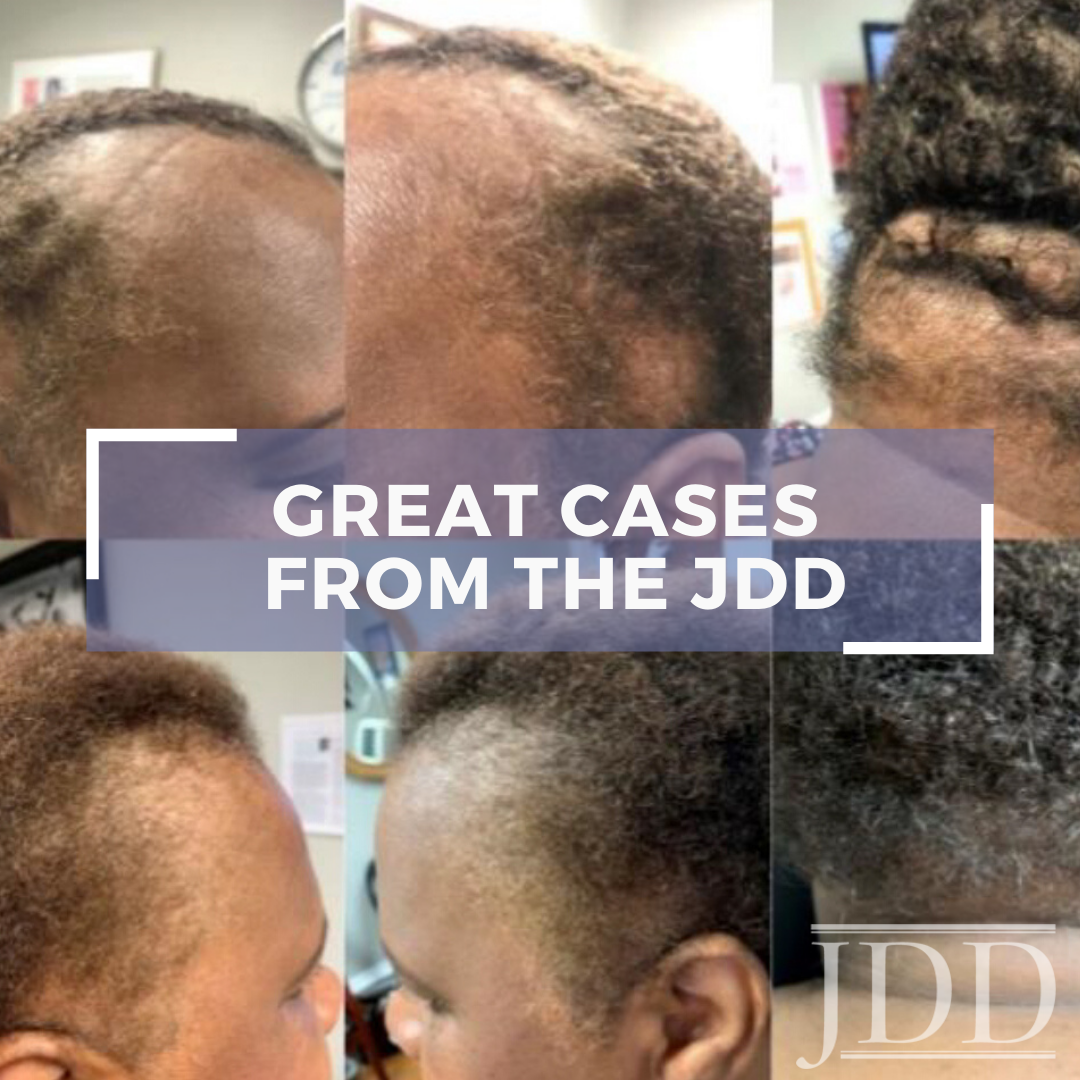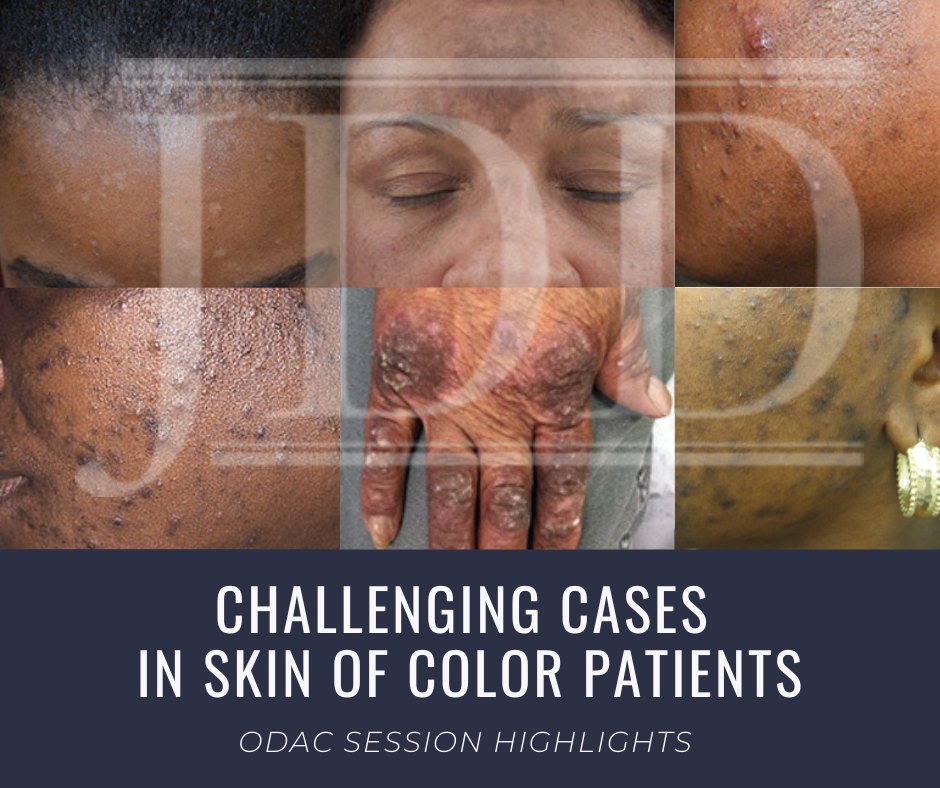A Closer Look at a Multi-Targeted Approach to Hair Loss in African American Women
 Hair loss is a common problem that spares no gender or ethnic group. As we know, there are differences in straight and curly hair including follicle shape, growth rate, and density.2Similarly, there are also differences epidemiologically in what types of hair loss are more commonly seen in different ethnic groups, as well as how it’s diagnosed and treated.2 JDD authors Cheryl Burgess MD, Wendy R …
Hair loss is a common problem that spares no gender or ethnic group. As we know, there are differences in straight and curly hair including follicle shape, growth rate, and density.2Similarly, there are also differences epidemiologically in what types of hair loss are more commonly seen in different ethnic groups, as well as how it’s diagnosed and treated.2 JDD authors Cheryl Burgess MD, Wendy R …
 Hair loss is a common problem that spares no gender or ethnic group. As we know, there are differences in straight and curly hair including follicle shape, growth rate, and density.2Similarly, there are also differences epidemiologically in what types of hair loss are more commonly seen in different ethnic groups, as well as how it’s diagnosed and treated.2 JDD authors Cheryl Burgess MD, Wendy R …
Hair loss is a common problem that spares no gender or ethnic group. As we know, there are differences in straight and curly hair including follicle shape, growth rate, and density.2Similarly, there are also differences epidemiologically in what types of hair loss are more commonly seen in different ethnic groups, as well as how it’s diagnosed and treated.2 JDD authors Cheryl Burgess MD, Wendy R … Continue reading "A Closer Look at a Multi-Targeted Approach to Hair Loss in African American Women"


 In this case series, JDD authors evaluate the efficacy and safety of intralesional triamcinolone acetonide injections (ILK) when used with topical minoxidil in the management of traction alopecia in 6 African American women.
Background
Traction alopecia (TA) is a form of hair loss secondary to repetitive and/or prolonged tension to a hair follicle over an extended period of time. This typically …
In this case series, JDD authors evaluate the efficacy and safety of intralesional triamcinolone acetonide injections (ILK) when used with topical minoxidil in the management of traction alopecia in 6 African American women.
Background
Traction alopecia (TA) is a form of hair loss secondary to repetitive and/or prolonged tension to a hair follicle over an extended period of time. This typically …  Well+Good recently published an article asking if hair loss supplements actually work.
For an expert opinion, I consulted Crystal Aguh, MD, Director of the Ethnic Skin Program and Assistant Professor in the Department of Dermatology at Johns Hopkins University School of Medicine, Baltimore, MD.
What is the theory behind hair supplements?
Hair supplements are designed to create an ideal nu …
Well+Good recently published an article asking if hair loss supplements actually work.
For an expert opinion, I consulted Crystal Aguh, MD, Director of the Ethnic Skin Program and Assistant Professor in the Department of Dermatology at Johns Hopkins University School of Medicine, Baltimore, MD.
What is the theory behind hair supplements?
Hair supplements are designed to create an ideal nu …  Next Steps in Derm, in partnership with ODAC Dermatology, Aesthetic and Surgical Conference, is excited to share a new video series where dermatology key opinion leaders share important updates and pearls on a variety of medical, surgical, and aesthetic dermatology topics.
First up is Dr. Amy McMichael, Professor and Chair of Dermatology at the Wake Forest University School of Medicine, sharing …
Next Steps in Derm, in partnership with ODAC Dermatology, Aesthetic and Surgical Conference, is excited to share a new video series where dermatology key opinion leaders share important updates and pearls on a variety of medical, surgical, and aesthetic dermatology topics.
First up is Dr. Amy McMichael, Professor and Chair of Dermatology at the Wake Forest University School of Medicine, sharing …  This year at the 17th Annual Dermatology, Aesthetic & Surgical Conference (ODAC), Dr Amy McMichael presented the audience with new pearls of advice on how to approach and diagnose complex medical dermatology cases in patients with skin of color. During her session, she addressed the important need for providers to be able to recognize disease in patients of all races. The majority of the glob …
This year at the 17th Annual Dermatology, Aesthetic & Surgical Conference (ODAC), Dr Amy McMichael presented the audience with new pearls of advice on how to approach and diagnose complex medical dermatology cases in patients with skin of color. During her session, she addressed the important need for providers to be able to recognize disease in patients of all races. The majority of the glob …